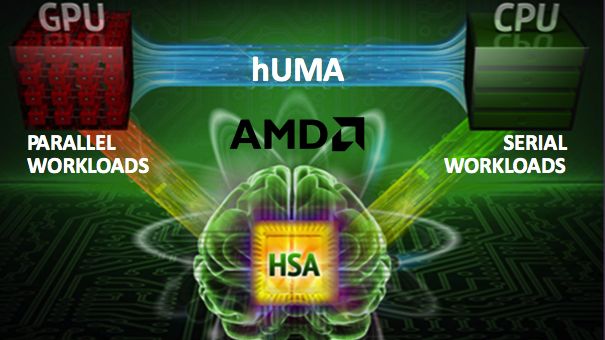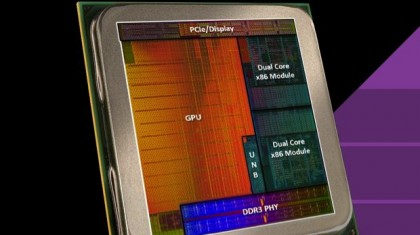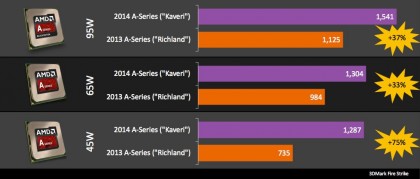AMD launches Kaveri APUs, paints target on Intel's Haswell
Kaveri looks to conquer 1080p graphics, 4K and even cryptocurrency

AMD's APU vision of the future is finally upon us. "Kaveri," the company's follow-up to "Richland," is seeing the light of day, along with its long-awaited pricing tiers.
Priced above Richland and below Intel's "Haswell" line, AMD will launch the top-end A10-7850K for $173 (about £105, AU$190), the middle-tier A10-7700K for $152 (about £92, AU$167), and the bottom rung A8-7600 for $119 (about £72, AU$131).
Depending on the retailer, Intel's Core i5-4670K, i5-4440S and i3-4330 chips fall between $242 (about £147, AU$267) and $127.99 (about £78, AU$141) from the high to low end.
The two Kaveri A10s are available starting today, and will come bundled with EA's Battlefield 4. The A8 will begin shipping sometime in Q1 2014.
Kaveri specifications
From a bird's-eye view, the Kaveri die measures 245mm squared, holds 2.41 billion transistors and is built on 28nm-SHP. All feature integrated Radeon R7 graphics.
Kaveri houses up to four multi-threaded "Steamroller" CPU cores and up to eight Graphics Core Next (GCN) GPU cores, comprising what AMD is calling the chip's "compute cores."
AMD pocketed the term to describe the CPU/GPU system humming inside Kaveri, one that's designed to deliver 50% more GPU performance and up to 20% better x86 IPC.
Are you a pro? Subscribe to our newsletter
Sign up to the TechRadar Pro newsletter to get all the top news, opinion, features and guidance your business needs to succeed!
Kaveri's graphics cores have the same design as AMD's "Hawaii," but with the addition of coherent shared unified (hUMA) memory. Like Hawaii, Kaveri supports AMD's TrueAudio tech.
Thanks to Heterogeneous System Architecture (HSA), Kaveri's compute cores have equal access to the entire memory (up to 32GB), are equally flexible to dispatch workloads, and are each able to unlock all CPU and GPU Gflops.
In AMD's words, HSA abolishes the "tariffs" between the CPU and GPU. Also with HSA, Kaveri can lay claim to the first full OpenCL 2.0 capable chip.

The top marked A10-7850K packs the maximum 12 compute cores and has a max turbo core of 4.0GHz. Its default CPU frequency hits 3.7GHz and its GPU frequency 720MHz. L2 cache measures 4MB and overall power runs at 95W.
The A10-7700K clocks in with 10 compute cores, and a max turbo core of 3.8GHz. Default CPU frequency flips at 3.4GHz and the GPU has the same 720MHz. Users will also find here 4MB of L2 cache and a power wattage of 95.
Lastly, the A8 runs at a significantly lower power sap (65W/45W), though it too has 10 compute cores. The max turbo core runs 3.8GHz/3.3GHz and default CPU frequency idles around 3.3GHz/3.1GHz. GPU frequency is locked at 720MHz, and L2 cache at 4MB.
Targeted to win notebooks, and some 4K too
AMD has spent months drumming up developer support and public interest in Kaveri and its associated tech, namely the Mantle API, GCN architecture, TrueAudio and HSA.
During the company's Tech Day at CES 2014, the message on what product segment AMD is lobbying for with the new APU was made loud and clear: Kaveri is "targeted to win the notebook."
Harnessing more performance per watt and extending battery life in lightweight form factors - ahem, notebooks - are two of AMD's central design goals with the chip.

To those ends, Senior Product Marketing Manager Adam Kozak told TechRadar that AMD focused on the 35W to 45W slice of the power pie with Kaveri.
According to Kozak, Kaveri is ideal for free-to-play games, "kids games," multiplayer and indie titles, and can run them "very, very fast at 1080[p] maximum graphics."
However, the resolutions don't stop at 1080p. Kaveri also supports 4K, something HSA helps it achieve by offloading and with compute performance, never burning through high wattages.
Kozak said the 4K focus is on entertainment usage such as viewing movies, Photoshop and internet tasks, not games.
AMD took a bit of a left turn - though a timely one - in demonstrating Kaveri's proficiency in cryptocurrency. Turns out Kaveri is primed for data mining, and AMD found it can collect $704 (about £429, AU$777) annualized.
Not a bad return for a $173 - $119 piece of silicon.
Michelle was previously a news editor at TechRadar, leading consumer tech news and reviews. Michelle is now a Content Strategist at Facebook. A versatile, highly effective content writer and skilled editor with a keen eye for detail, Michelle is a collaborative problem solver and covered everything from smartwatches and microprocessors to VR and self-driving cars.
